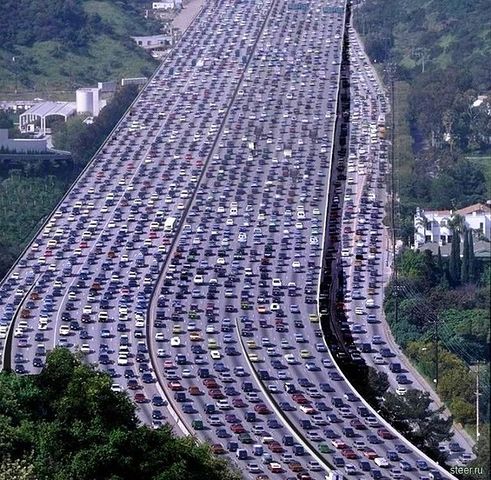
China is experiencing something unheard of, symptoms
something that happened twice this summer, and will likely happen with more frequency—traffic jams that last multiple days or even weeks. These are not the normal delays that happen every day in major cities and their satellites, the dreaded rush hour, but an intensive vehicular congestion that baffles the senses, covering tens of miles. The first event occurred in the beginning of June on the Jingzhang Expressway (G025) lasting over a week on a route that takes two days to complete. The second event happened in mid-August on the China National Highway (G110). The line of vehicles stretched for over 100km (60mi) and took over ten days to clear up.
What caused these massive blockages? The apparent cause of China National Highway’s slowdown was said to be construction, blocking off at least one of the lanes. Additionally, a number of minor accidents contributed to the snail’s pace of the highway. But one has to ask, can construction and fender benders really slow traffic down enough to cause multi-day back-ups? On closer examination, a new dilemma presents itself in relationship to these congestions, both the G025 and the G110 are central transportation routes of coal from Inner Mongolia to Beijing and the energy demands for this resource shows little sign of lessening. The sheer daily volume of trucks hauling coal contributes to frequent congestion on these highways. Slow downs are a regular feature on these roads but these types of blockage are unusual.
Ten day traffic jams are an unbelievable phenomenon, the average city dweller usually does not suffer a thirty minute slow down well, much less over a week. In order to make the situation more tolerable, many drivers played cards, read books, or talked with those they were stranded with. Enterprising merchants also benefitted from the jams, delivering foodstuffs and other necessities on their bicycles.
This all sounds like a dystopic daydream from a science fiction movie, but could easily become normalized as infrastructure is outpaced by growth. Many factors indicate that this trend could continue, namely the success of China’s hyper-industrialization, the relatively high-value and stability of the Chinese currency, growing energy demands, and the expanding middle-class who now have access to private transportation. With growth comes consequences and the more rapid the growth, the more quickly certain problems appear. The government sees a policy on car use as crucial measure, not only to curb congestion but to address air quality issues. For instance in Beijing during the 2008 Summer Olympics, the government forcefully prevented people from driving during the Games, effectively removing one half of the traffic and temporarily improving the air quality. One can only assume that the government did not want visitors from other countries to experience the air quality of day-to-day Beijing—a sobering thought when thinking about the environmental issues that are attributed to the megalopolis. The current state of infrastructure is already nearing its breaking point and it will only get worse.
Infrastructure improvements cannot keep up. Infrastructure projects are some of the most unwieldy and costly projects to build and maintain, involving the cooperation of numerous government entities and private contractors. The projects often take years (even decades) to complete and the amount of pre-planning and negotiations adds even more time to the process. Even when these sorts of projects are streamlined and fast-tracked, large infrastructure upgrades are massive undertakings.
The traffic events of this summer were exemplary situations for queuing theory and can be modeled with equations (Stochastic processes). In fact, there is a whole branch of statistical research devoted to this exact problem, traffic jams. Traffic engineers may be crucial in preventing traffic jams like this from happening in the future by determining road capacities, analyzing traffic density, and coming up with possible solutions. It is these number crunchers that can be blamed for the existence metering lights on many highway on-ramps and bridges or the excruciatingly slow traffic lights on certain intersections.
There will be more of these massive traffic events in the future. The pace of economic growth, rising energy demand, and the availability of private transport will continue to expand faster than the infrastructure needed to sustain it. Planners will struggle to come up with creative solutions to increasing problems. These breakdowns may become systematic and predictable to the teams of analysts and builders but will be part of the daily landscape of life in the city.